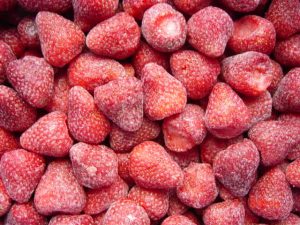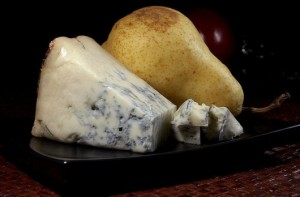Following a school ski-trip to Austria from 10-18/02/2017, nine of 25 participants of the group from Lower Saxony (Germany) developed gastroenteritis. The students and teachers (17-41 years) shared meals in a hotel. Active case finding revealed further cases among German school groups from North Rhine-Westphalia and Schleswig-Holstein, staying at the same hotel in February 2017.
 We conducted two retrospective cohort studies using self-administered questionnaires on clinical symptoms and food consumption. We defined a case as a trip participant in February 2017, staying at the aforementioned hotel and developing diarrhoea, vomiting or abdominal pain during or within ten days after the trip and/or who had a stool sample tested positive for STEC within four weeks after the trip. During the outbreak investigation, Austrian authorities detected that unlabeled raw cow milk delivered by a dairy farm had been offered at the hotel for breakfast during January and February 2017. Stool samples of participants, samples of milk served in the hotel and fecal samples of various animals kept at the milk-delivering farm were examined by culture and polymerase chain reaction. STEC isolates were typed using Pulsed-field Gel Electrophoresis (PFGE) and Whole-Genome Sequencing (WGS).
We conducted two retrospective cohort studies using self-administered questionnaires on clinical symptoms and food consumption. We defined a case as a trip participant in February 2017, staying at the aforementioned hotel and developing diarrhoea, vomiting or abdominal pain during or within ten days after the trip and/or who had a stool sample tested positive for STEC within four weeks after the trip. During the outbreak investigation, Austrian authorities detected that unlabeled raw cow milk delivered by a dairy farm had been offered at the hotel for breakfast during January and February 2017. Stool samples of participants, samples of milk served in the hotel and fecal samples of various animals kept at the milk-delivering farm were examined by culture and polymerase chain reaction. STEC isolates were typed using Pulsed-field Gel Electrophoresis (PFGE) and Whole-Genome Sequencing (WGS).
All 25 participants from Lower Saxony completed the questionnaire on symptoms and milk consumption; 14 were cases (56%). Thirteen of 20 participants who had consumed cold milk fell ill (risk ratio (RR): 3.25; 95%-confidence interval (CI): 0.55-19.32). Of 159 trip participants from North Rhine-Westphalia, 81 completed the questionnaire (51%), 25 were cases (31%); RR for cold milk was 2.11 (CI: 0.89-5.03). The combined RR for cold milk in both groups was 2.49 (CI: 1.16-5.35). Shiga toxin 1a-gene and eaeA-gene positive STEC O103:H2 were detected in nine of 32 patients’ stool samples and in two of 18 dairy farm cattle. Nine isolates from human stool samples and two isolates from cattle fecal samples yielded the same strain with an almost identical PFGE-pattern and WGS-profile.
Microbiological and epidemiological evidence identified raw cow milk as the vehicle. Results may have been compromised by misclassification of cases due to a recall bias and mild symptoms. As a result of this outbreak investigation, the Austrian authorities enforced Austrian law in the hotel, to provide milk only when pasteurized. We recommend re-emphasizing the risk of raw milk consumption to providers.
Shiga toxin-producing Escherichia coli O103:H2 outbreak in Germany after school trip to Austria due to raw cow milk, 2017-The important role of international collaboration for outbreak investigations, 29 May 2018
International Journal of Medical Microbiology
Maren Myliusa, b, c, , , Johannes Dreesmana, , Matthias Pulza, , Gerhard Pallaschd, , Konrad Beyrera, , Katja Claußena, , Franz Allerbergere, , Angelika Fruthf, , Christina Langf, Rita Pragerf, Antje Fliegerf, Sabine Schlagere, , Daniela Kalhöferg, , Elke Mertensa,
https://doi.org/10.1016/j.ijmm.2018.05.005
https://www.sciencedirect.com/science/article/pii/S1438422118301905
 The title of the Reddit post stated: “It’s a miracle that the policeman didn’t grab the poufs right away! We must not be ‘suppressed’: let the intestinal wind escape for everyone!”
The title of the Reddit post stated: “It’s a miracle that the policeman didn’t grab the poufs right away! We must not be ‘suppressed’: let the intestinal wind escape for everyone!”







.jpg) On Sunday,
On Sunday,  manufacturing process.
manufacturing process. The Austrian Agency for Health and Food Safety (AGES) also reported today that
The Austrian Agency for Health and Food Safety (AGES) also reported today that  The relatives of the six people who died are planning to sue Prolactal.
The relatives of the six people who died are planning to sue Prolactal.